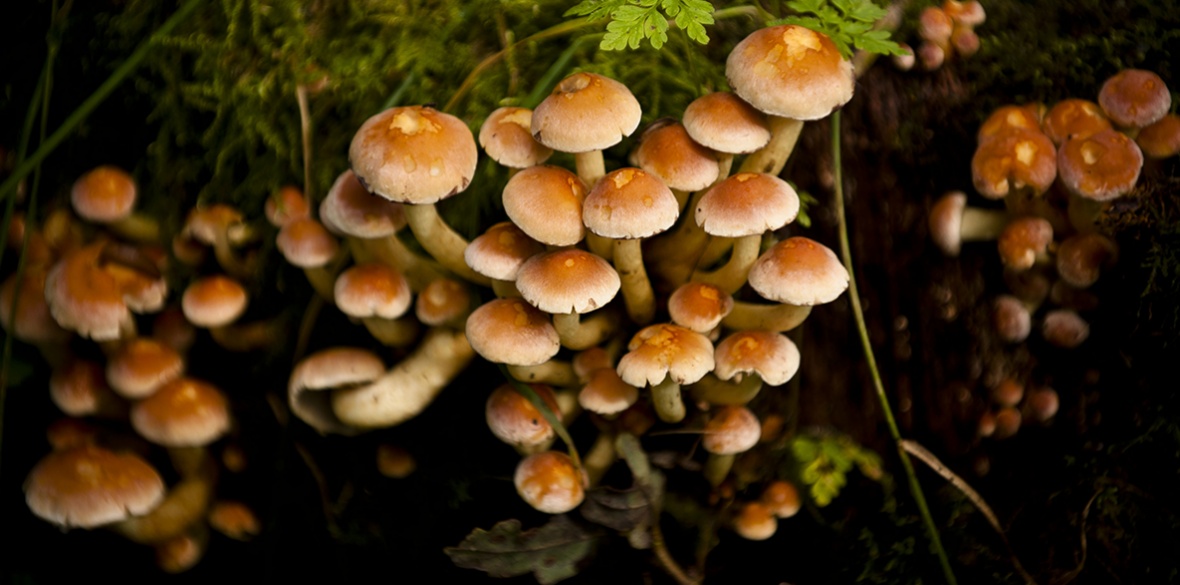This is the last article you can read this month
You can read more article this month
You can read more articles this month
Sorry your limit is up for this month
Reset on:
Please help support the Morning Star by subscribing here
LAST MONTH, a man in the US named Tyson Bottenus made worldwide news due to an extraordinary illness. What he initially thought was a brain tumour turned out to be a rare fungus that had travelled through his blood, crossed through the blood-brain barrier and took up residence deep inside his skull, where it grew and eventually caused a stroke.
Thanks to medical treatment he is recovering well, but unfortunately has sustained brain damage that, for the moment at least, has significantly changed his life.
This isn’t the first case of fungi infecting living bodies. Cordyceps is a fungus that infects some insects, takes control of their bodies’ extended nervous system and forces them to find a place to die where the fungus’s spores will travel best.
These creepy sci-fi zombie-insects capture the imagination and are recurrent stars of breathtaking natural history documentaries. While this is a very dramatic example, we actually interact with fungi all the time. Often their effects are beneficial (we’d be nowhere without the yeast that’s vital for bread and beer), but their negative effects are also common in more ordinary illnesses.
Fungal infections are major killers worldwide, especially where available healthcare is suppressed by global inequality. Estimates of deaths from all fungal diseases are of the same scale as deaths from TB and three times the number of deaths from malaria.
Some fungal infections are becoming more common, at least partly as a side effect of other medical intervention. Candida auris is a fungal infection that is largely associated with hospitals and similarly to other hospital-borne pathogens like the bacteria MRSA, is dangerous due to its strong drug resistance.
Many people worldwide are at risk of fungal infection due to an immune system that is weakened by treatment for other infections. People living with untreated HIV, diabetes, or having treatment for cancer may have a weakened immune system. Other people have immune systems weakened by exposure to other illnesses or malnourishment. Healthy immune systems are generally strong enough to resist fungal pathogens, when they are weakened then people are in danger of developing serious illness as a result of fungal infection.
People who’ve survived bad cases of Covid are also at risk, particularly after the use of steroids to prevent death in critically ill people. Research into combating these opportunistic fungal infections is more important now than ever if we are to reduce the long-term health effects of the pandemic.
Fungi are extremely strange. It’s easy to forget when we eat mushrooms, the equivalent of a fungal fruit, just how odd they are. Fungi aren’t plants, animals or bacteria, they are a totally different branch of life.
They share their fundamental building material with the hard shells of crabs, shrimps and beetles, despite the soft and feathery gills of their fruiting bodies, mushrooms. They grow extraordinarily quickly and produce chemicals unknown in the rest of the natural world.
One of their most unsettling features is also one of the most profoundly important to the life of our planet. Fungi mostly exist in the form of thin, filamentous and highly interconnected webs. It is the infiltration of these webs through the walls of our bodies, houses and food that makes fungi so effective even before we notice the effects of their spores.
These webs are especially important in the soil and are crucial to the vast majority of plants because they enhance the interaction of roots and soils. Fungal webs grow into the root cells themselves, blurring the line between the plant’s cells and the fungus’s own.
Doing this allows new channels of nutrients and communications between multiple fungal networks and even other plants. The more we learn about this symbiosis between plants and fungi, the more vital it appears. Without these root/fungus interactions, the plants simply can’t properly grow.
Thousands of plant and fungal scientists worldwide work on this frontier to understand how fungal networks affect the production of crops and determine the success of forests. While we seek to reduce fungal infiltration in people who are at risk of getting ill, this example should inspire us to understand more about the powers of fungal networks. It is the ability of fungus to grow through living cells and tissues in this case that allows for greater integration of plant roots with their surroundings and their neighbours.
Our more mundane interactions with fungal infections are in the forms of athlete’s foot, dandruff and thrush, which are all caused by fungi living on the edges of human bodies and are treated with medicated creams.
A more pervasive fungal nuisance for most people in Britain is the mould that grows in the walls of damp houses — but you don’t need to worry that the mould will start to grow on you, these fungi do not make the leap to living in our bodies, but instead stay in the cold damp plaster and cement of the walls.
If you don’t live with mould, it can seem unimportant, but its effects are horrible. Mouldy rooms damage clothes and food and many people are allergic to the spores that the mushrooms give off and experience coughing, itching and skin problems when they are exposed.
Even if you aren’t allergic, the spores can irritate breathing. It is especially dangerous for people with asthma, which can be highly exacerbated by mould exposure. There is no excuse for landlords leaving tenants in housing covered in mould.
Landlords love blaming tenants for this problem, which is generally caused by lack of maintenance such as damp-proofing walls and windows and stopping leaks or holes. Last year, in the middle of the pandemic, many landlords stopped or slowed repairs, citing Covid. Tenants protested up and down the country against individual landlords, as well as letting agents responsible for upkeep due to untreated mould.
In a year of unprecedented protest against unfair evictions and blatant disregard for their rights, tenants have been organising seriously in towns and cities to get justice. Local branches of the tenants’ unions Acorn in England and Wales, in Bristol, Leeds, Cambridge, Cardiff and Living Rent in Scotland — particularly Glasgow — have been protesting against individual landlords and against letting agents for their inaction on mould.
This collective action has been extremely effective in several instances, getting landlords to scrub up and to pay up. It is these networks of people who share resources, communicate and work together that win the change they deserve. Fungi get a lot of credit for their highly effective networks — but the tenants’ unions are pretty brilliant too.












